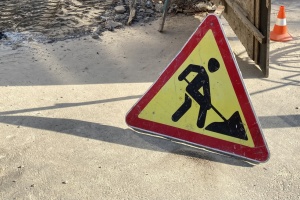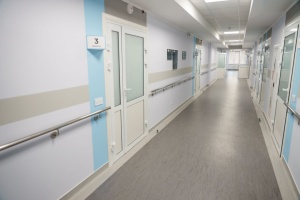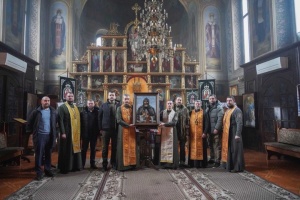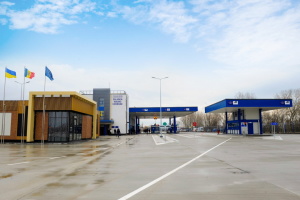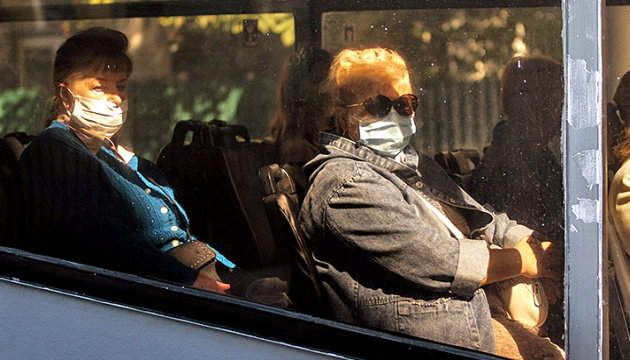
Events that shook Ukraine in 2020
To say that 2020 has been an eventful year is to say nothing. It is a year in our history that has irreversibly changed our lives. It divided time into the pre-COVID-19 period and the period in which we are forced to exist in the same space as the deadly virus. All other events in this space and time have become completely different.
Ukrinform decided to remind its readers of the chronology of events that shook Ukraine in 2020.
1. PASSENGER PLANE CRASH IN IRAN
On January 8, 2020, shortly after taking off from Tehran airport, Ukraine International Airlines (UIA) flight PS752 was shot down by two surface-to-air missiles.
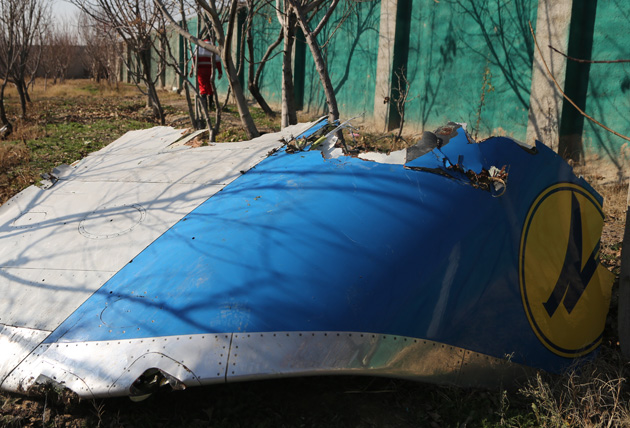
The crash killed all 176 people on board, including 167 passengers and nine crewmembers. Those killed in the disaster were citizens of seven countries, including 11 Ukrainians (nine crewmembers and two passengers).
Initially, the Iranian side claimed that the plane suffered a technical problem and denied that it could have been shot down. Iran officially admitted its guilt only on January 11 (in response to mounting international pressure and evidence), saying that the Islamic Revolutionary Guard Corps (IRGC) mistakenly shot down the Ukrainian passenger plane.
Later it also emerged that the UIA plane had been hit by two Tor-M1 surface-to-air missiles, which Iran received from Russia. This circumstance, as well as the fact that Tehran still refuses to hand over the flight recorders to Kyiv, raised doubts among some experts as to whether the Ukrainian plane was actually shot down accidentally.
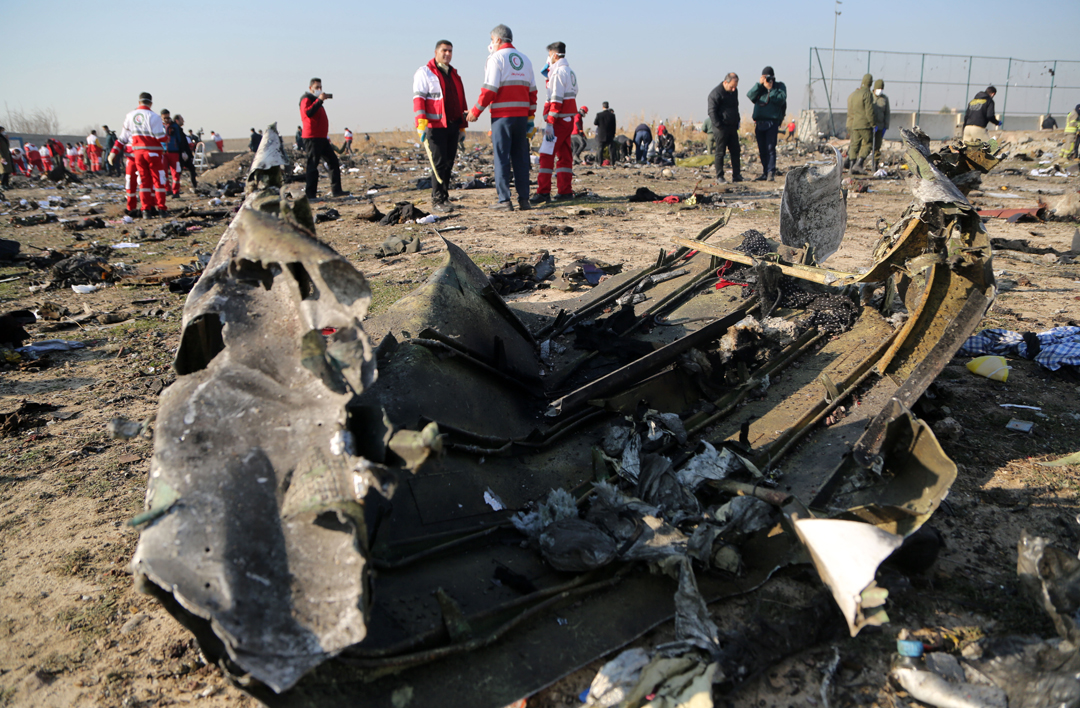
Initially, Iran stated that it could not examine the plane's black boxes, but it also did not intend to pass them to other countries. However, on July 18, Tehran sent the black boxes to Paris. Later, Ukrainian Deputy Foreign Minister Yevhen Yenin said that the black boxes from flight PS752 had been successfully examined, and the transcript confirmed the fact of illegal interference in the flight of the aircraft.
Negotiations on compensation for Iran's downing of the PS752 aircraft began in Kyiv on July 30 with the participation of an Iranian delegation. The second round took place on October 19-20. Earlier, Iran sent Ukraine a draft memorandum of understanding, according to which Kyiv and the families of the victims had to agree to write off the cause of the crash as "human error" and waive their right to sue the perpetrators of the downing of the plane in court. Ukraine rejected such a proposal.
In addition, Iran has not yet transferred its technical report to other affected countries so that the report could be made public within a year, in accordance with Annex 13 to the Convention on International Civil Aviation, also known as the Chicago Convention.
In late November 2020, it emerged that the Iranian government intended to envisage EUR 200 million in its state budget in order to pay compensation to the families of UIA plane crash victims in January next year. The funds are to be allocated from the National Development Fund of Iran. The exact amount of compensation for each person has not yet been determined.
However, on December 9, reports said that Iran had withdrawn an offer on payments to the families of those killed in the UIA plane crash in Tehran because the funds for compensation were to be allocated from the National Development Fund.
2. FIRST COVID-19 CASES IN UKRAINE
On March 3, Ukraine reported the first confirmed coronavirus case in a man from Chernivtsi who arrived in Romania by plane from Italy and then arrived in Ukraine by car. On March 12, two more cases were officially confirmed. Infections were recorded in the Chernivtsi and Zhytomyr regions.
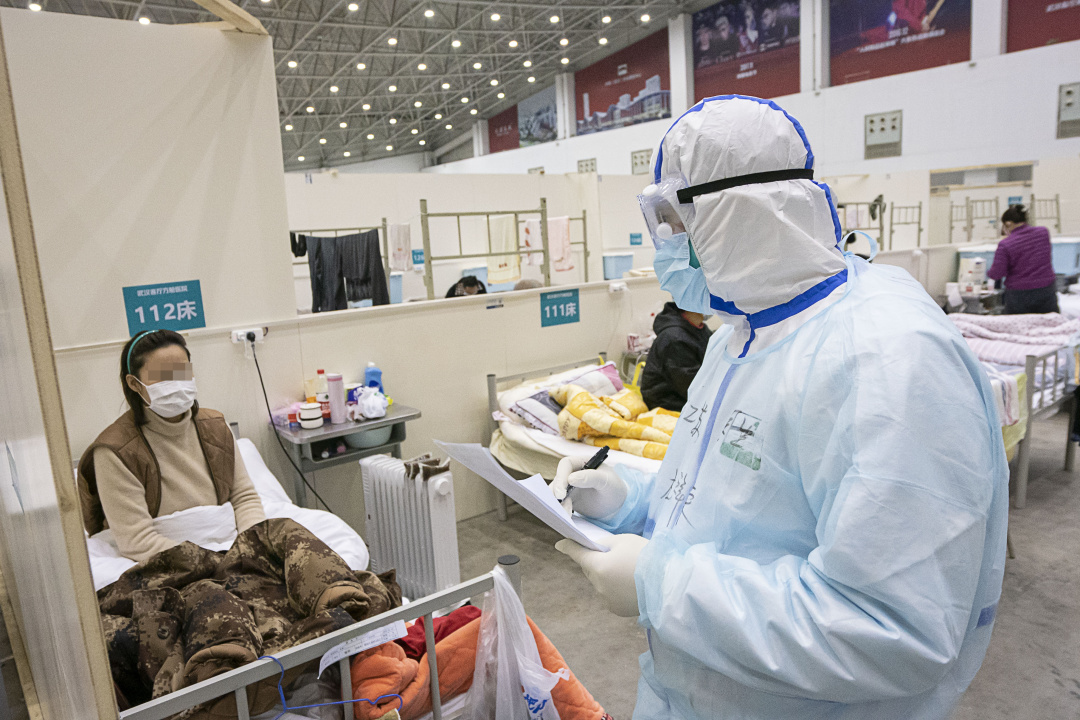
Photo: Xinhua
The world's first case of the coronavirus disease was recorded in the Chinese city of Wuhan in November 2019. By December 15, the total number of infections rose 27, and by December 20, that number reached 60 people. On January 11, a 61-year-old man died of the new disease for the first time. Two days later, the virus was reported outside China, in Thailand. The first case in Japan was reported on January 16 and in the United States on January 30.
The Government of Ukraine decides to strengthen security measures. At Boryspil Airport, passengers on direct flights from China are screened for fever. Ukrainian airline SkyUp announces that it is suspending flights to Sanya (Hainan Island), and travel companies are suspending tours to China.
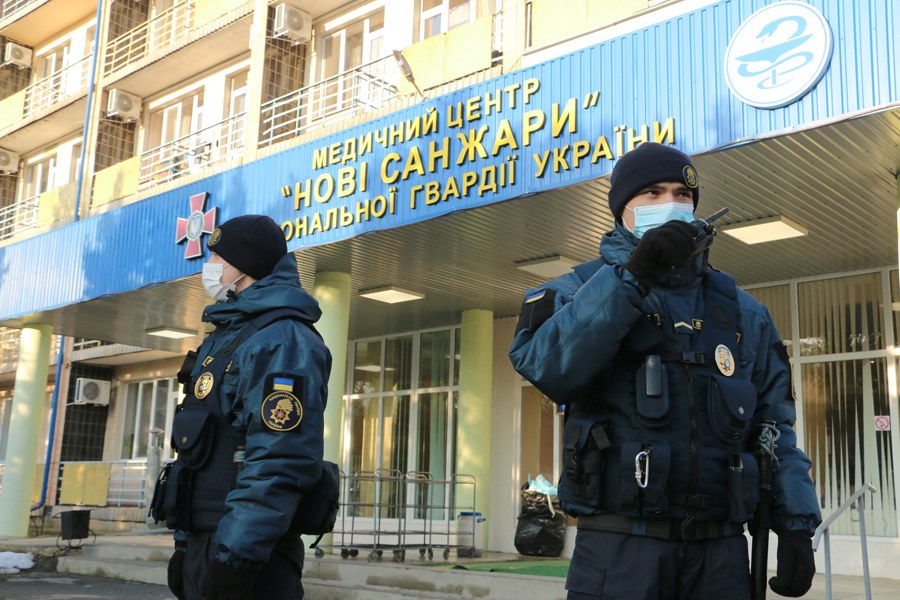
On February 20, a plane with evacuees from virus-stricken China arrived in Ukraine. They were to be placed in the Novi Sanzhary medical center in Poltava region. Locals, in turn, started protests. Subsequently, the protests escalated into clashes, and one police officer sustained a head injury. Stones were thrown at a bus with evacuated Ukrainians. As a result, none of the evacuees tested positive for COVID-19, but they received severe stress from how they were met at home.
On March 11, the World Health Organization characterized COVID-19 as a pandemic.
On the next day, March 12, a nationwide lockdown was declared in Ukraine, and a state of emergency has been in place since March 25. On March 16, the Cabinet of Ministers decided to close the subway in Kyiv, Kharkiv, and Dnipro. Railway and bus services, as well as international flights, were suspended on March 18.
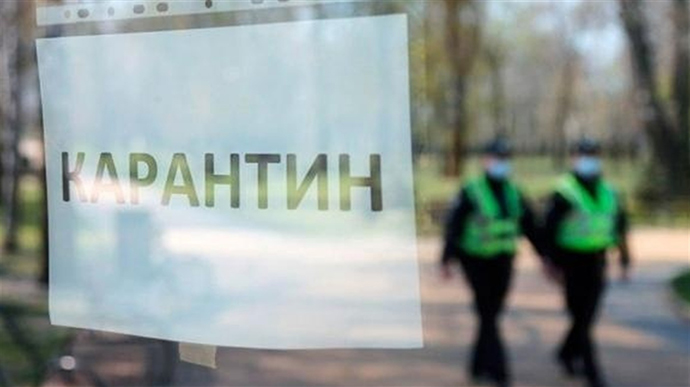
On April 6, Ukraine introduced the mandatory wearing of face coverings in public places. It was forbidden to visit parks and recreation areas and stay in the street without documents. People over the age of 60 were advised to stay at home.
Tough lockdown measures were in place until May 11. Gradually, the government began to weaken them, allowing the operation of non-food stores, dental clinics, and beauty salons. Parks and playgrounds reopened. Domestic passenger services were restored in Ukraine on May 22, and the subway resumed its operation on May 25.
On May 22, the Cabinet of Ministers introduced a so-called "adaptive quarantine" - restrictions in the regions were introduced depending on the epidemiological situation. New rules came into force in Ukraine on August 1. Depending on the epidemiological situation, all regions of Ukraine were divided into four levels of epidemic danger: "green", "yellow", "orange" and "red". On November 11, the Cabinet of Ministers decided to waive the "adaptive quarantine" and imposed restrictions of the "orange" level of epidemic danger in Ukraine.
Currently, the quarantine and emergency situation regime has been extended until February 28, 2021. From January 8 to 24, quarantine restrictions will be tightened.
3. WILDFIRES IN CHORNOBYL EXCLUSION ZONE AND ZHYTOMYR REGION
On April 4, large-scale wildfires broke out in the Chornobyl Exclusion Zone and were extinguished only ten days later. In some places, firefighters continued to put out the blaze until May 3.
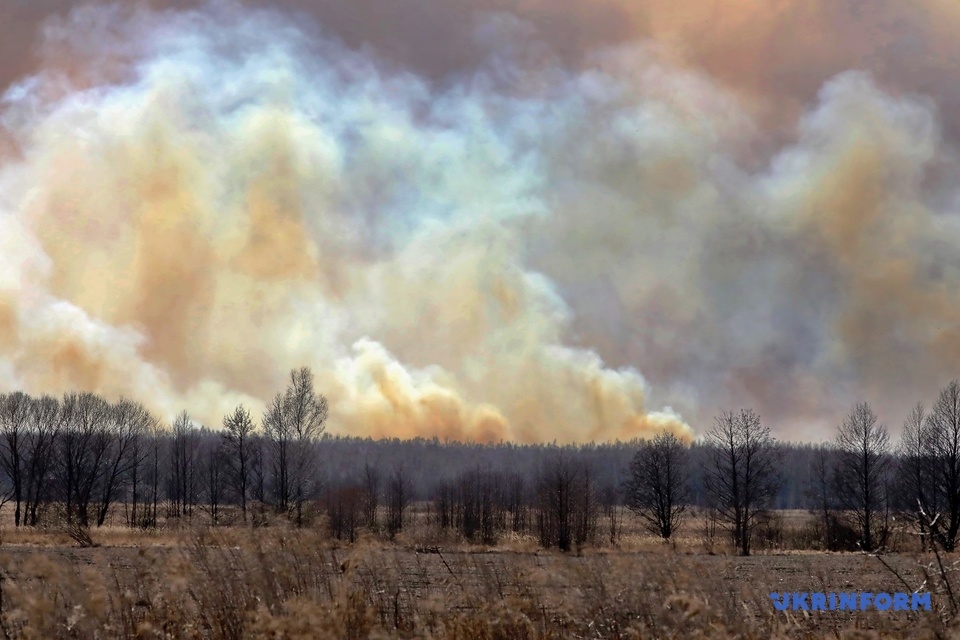
According to the State Agency of Ukraine on Exclusion Zone Management, fires in the Chornobyl zone affected 20,000 hectares, of which 30% were forests. Rare animals and plants were under threat.
Two men were charged with arson on April 15. Kyiv regional police approved a suspicion notice for one more arsonist on April 16.
Following this incident, the Verkhovna Rada tightened liability for burning dry vegetation.
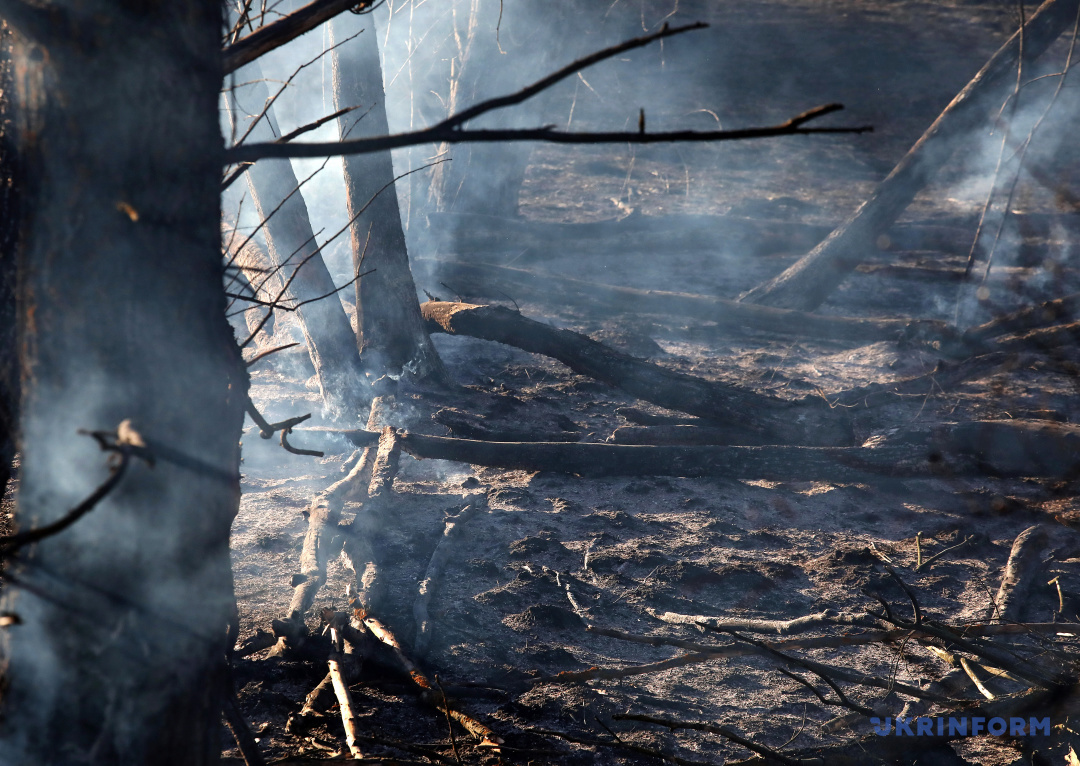
However, on April 16, the State Emergency Service of Ukraine received reports that grass and plant litter caught fire near the villages of Rudnia and Vystupovychi in Zhytomyr region. Subsequently, the fire spread to other villages - Ostrovy, Divoshyn, Zhurba, Mahdyn and Lychmany in the Ovruch district. In addition, the fire spread to forest plantations.
The fires affected 4,300 hectares. The blaze destroyed 39 houses. The Cabinet of Ministers allocated UAH 25 million to eliminate the consequences of fires in Zhytomyr region.
4. RAPE IN KAHARLYK
On the night of May 23-24, 2020, an operative in his office tortured a woman who was summoned to the police station as a witness. He put a gas mask on her head, handcuffed her and fired a shotgun over the woman's head, after which he raped her several times.
In addition, police used physical force on a man who was also in the police department. Threatening him with rape, they brought him to his knees, beat him on the head with a rubber truncheon, put on a gas mask, and fired a pistol over his head. As a result, the victim's ribs and nose were broken.
The Obukhiv police department received a report from the hospital about violence and torture used against the victim on the evening of May 24, and at 19:40, the rapists were detained and investigators from the State Bureau of Investigation (SBI) were called to the crime scene.
On May 25, National Police Chief Ihor Klymenko signed an order disbanding the Kaharlyk police department, dismissing all of its leadership and suspending the head of the Obukhiv district police department from office.
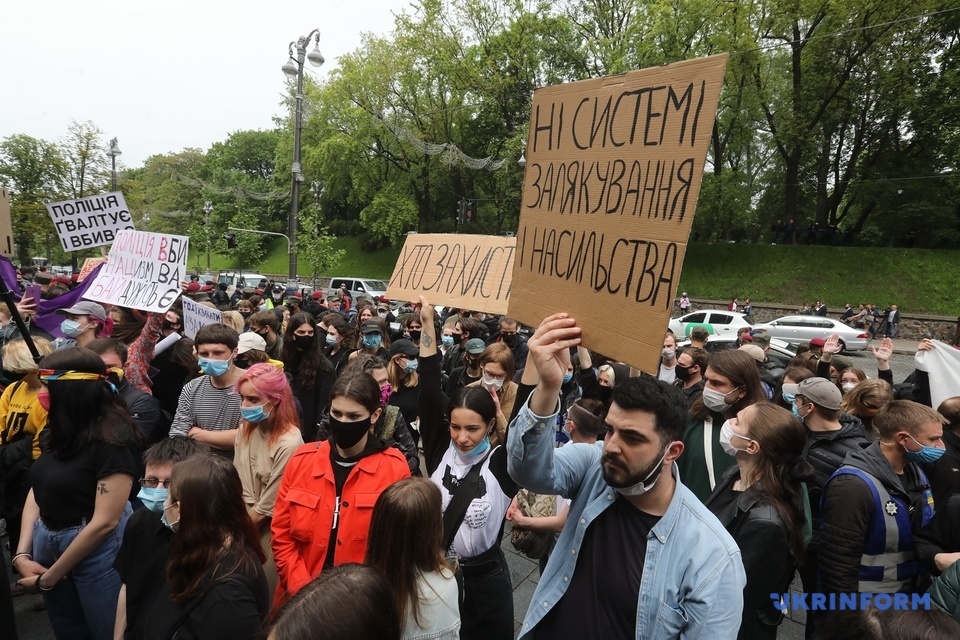
On May 25, the SBI launched a pretrial investigation into two police officers detained on suspicion of raping a woman. After that, law enforcement agencies began to receive reports of other cases of torture that took place at the Kaharlyk police department. It turned out that the head of the department knew about that, but did not react.
On May 26, Kyiv's Holosiivskyi District Court arrested Kaharlyk police officers, with no right to post bail.
On July 2, suspicion notices were handed over to two other law enforcement officers from Kaharlyk. On July 3, Kyiv's Holosiivskyi District Court chose a measure of restraint for two more employees of the Kaharlyk police department.
On October 27, Kyiv's Holosiivskyi District Court released police officer Yaroslav Levandiuk, a defendant in a torture and rape case.
On October 27, under the procedural control of the Prosecutor General's Office, the former head of the Kaharlyk police station where the torture took place was handed a suspicion notice and placed under house arrest.
On December 2, prosecutors filed a lawsuit against five Kaharlyk police officers who tortured and illegally imprisoned people.
5. FLOODS IN WESTERN UKRAINE
On June 23, heavy rain caused flooding in the western regions of the country. Hundreds of kilometers of roads, dozens of bridges and kilometers of coastal defenses were destroyed, and hundreds of people were relocated.
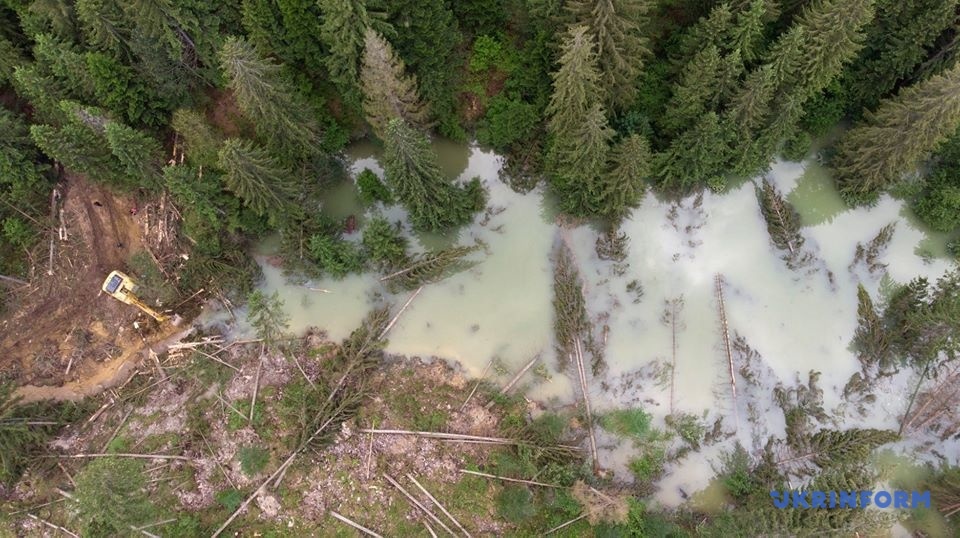
The government allocated more than UAH 700 million for priority steps to overcome the effects of the disaster and asked the parliament to approve the allocation of another UAH 2 billion. The damage caused by the disaster was estimated to be worth at least UAH 2.5 billion.
In Ivano-Frankivsk region, 263 towns and villages were flooded, more than 13,000 houses were damaged, and 20 were completely destroyed. In addition, 201 kilometers of roads, 93 bridges and more than 80 kilometers of coastal defenses were destroyed. The flooding killed four people. UAH 480 million was allocated from the reserve fund of the state budget to eliminate the consequences of the disaster.
Three people were killed in the floods in Chernivtsi region. The disaster damaged 31 hydraulic structures and 17 bridges, flooded 51 towns and villages, 1,750 residential buildings, 3,776 wells, 819 basements, 3,642 homesteads, and damaged 2,818 hectares of agricultural land. In addition, 136 people, including 42 children, were relocated from the flood area. The total damage caused by the natural disaster in Bukovyna reached UAH 570 million.

On October 1, the Cabinet of Ministers of Ukraine decided to allocate UAH 175.27 million as additional funds to eliminate the June floods in the western regions of Ukraine. The amount of funds from the reserve fund of the state budget, which was allocated to the affected regions, has already amounted to UAH 1.377 billion.
6. LUTSK TERRORIST
Early on July 21, at the Teatralna Square in the center of Lutsk, a man hijacked a bus with 13 passengers, en route from Berestechko to Krasylivka. He claimed that he had a bomb, an automatic weapon and a great number of explosives. In addition, he said, one more bomb was planted in another plane and could be detonated remotely.
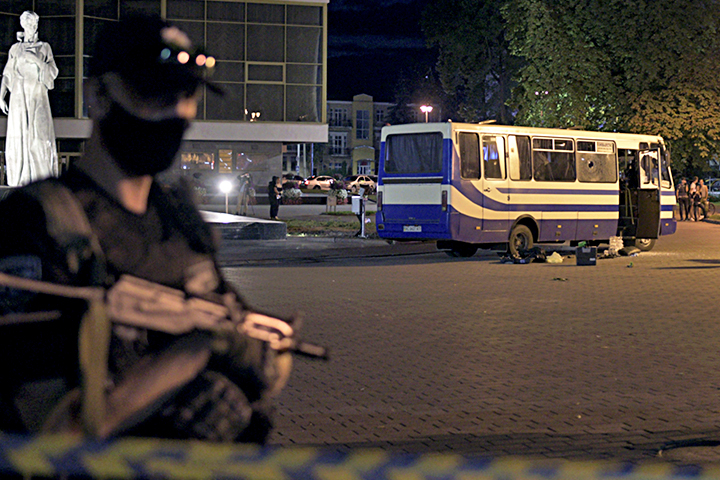
The terrorist was Maksym Kryvosh, 44, twice convicted of fraud, extortion and robbery. In 2014, he published in Lutsk a book "Philosophy of the Criminal" under the pseudonym " Maksim Plokhoy." This is an autobiographical book where he describes his stay in prison.
Kryvosh demanded that government officials, including judges, prosecutors, ministers and the prime minister, write on social media that they are "terrorists in law." He made a special demand to President Volodymyr Zelensky. The head of state had to record a video address with the words "The film Earthlings from 2005. Everyone should watch it."
President Zelensky fulfilled Kryvosh's request. At about 10:00, the hostages were released and the terrorist was detained.
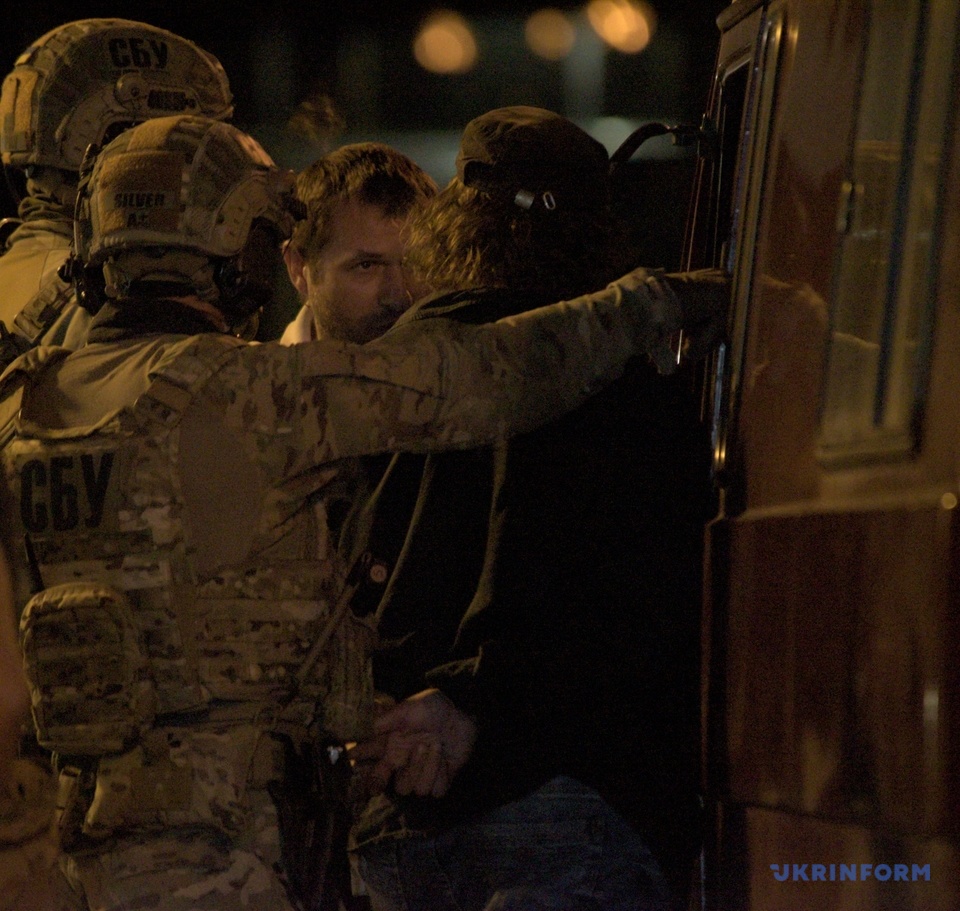
Kryvosh was charged with committing crimes under Part 1 of Article 258 (a terrorist attack), Article 263 (illegal handling of weapons and explosive devices), Article 348 (attempt on the life of a law enforcement officer) and Article 147 (hostage-taking) of the Criminal Code of Ukraine. On July 23, a court ruled to detain the "Lutsk terrorist" for two months. His arrest was last extended on November 5.
In addition, Kryvosh's probable accomplice, Dmytro Mykhailenko, was detained in Kharkiv. Several weapons, ammunition, explosives, etc. were seized from him.
On July 24, Kharkiv's Ordzhonikidze District Court chose a measure of restraint for Mykhailenko in the form of detention, setting him bail in the amount of UAH 175,760. On July 28, Mykhailenko was released on bail.
7. OIL TANKER DELFI
On the night of November 21-22, 2019, the oil products tanker Delfi dragged anchor in storm near the port of Yuzhnyi. The vessel ran aground off the coast of Odesa, and crew members were evacuated.
As a result of the accident, the coast was polluted. Oil leaks were more frequent when the summer came. A large oil spill was discovered near the tanker in June 2020, and vacationers were forbidden to visit the beach where the ship drifted aground.
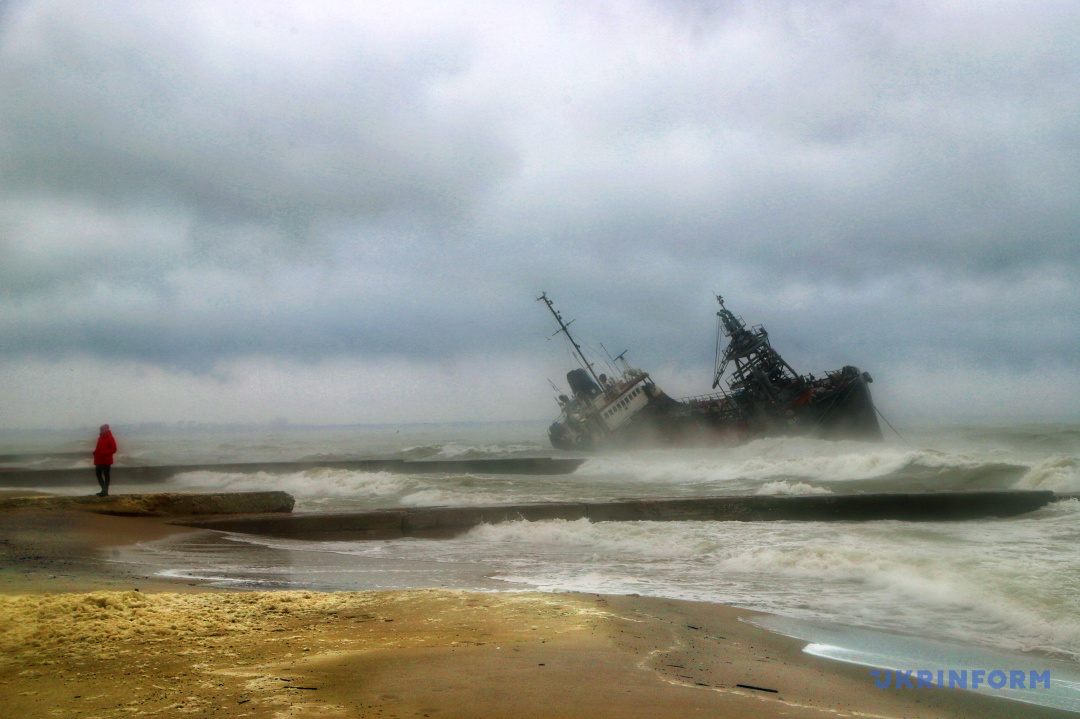
The ship's owner promised to remove the Delfi before March 31, but the lifting of the tanker was postponed several times.
In July 2020, the operation to lift the ship came under the control of the Ukrainian Sea Ports Authority. In addition, Brooklyn-Kyiv LLC and Craneship LLC took part in the operation.
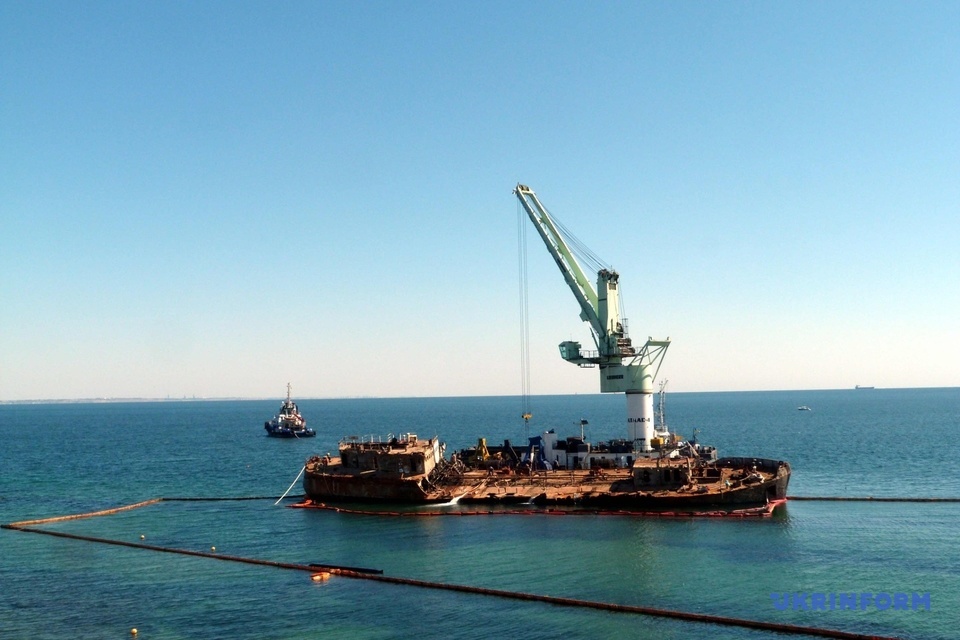
There were several attempts to lift the tanker, but they all ended in failure. The first attempt was made on July 18 when one of the nylon ropes broke. During the second attempt on July 26, a steel cable broke.
Finally, on September 10, the tanker was tugged to the Chornomorsk port. In total, the work to lift the vessel lasted 30 days and cost about UAH 14 million.
8. WILDFIRES IN LUHANSK REGION
On September 30, several fires were recorded in natural ecosystems in Luhansk region. No one expected the flames to spread so quickly and destroy so many homes and forests. It emerged on the second day that the fires were much larger than originally expected, that there were several hundred burned houses and casualties.
The most difficult situation was recorded along the contact line in the Stanytsia Luhanska, Novoaidar and Sievierodonetsk districts.
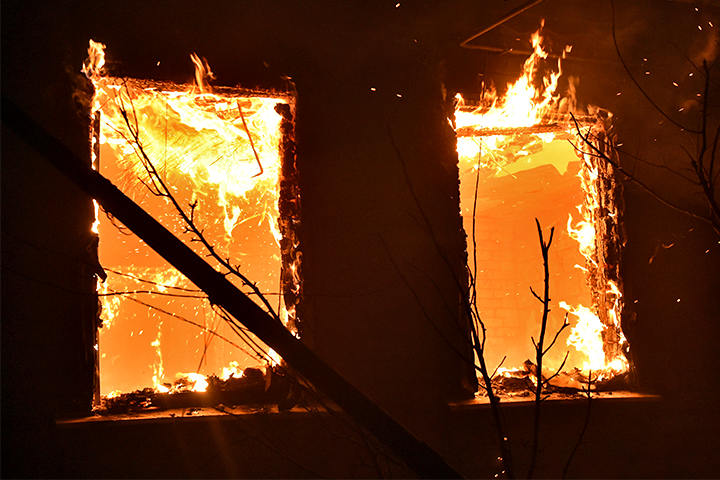
The fires were extinguished until October 8. According to experts, the approximate area covered by the fire exceeded 20,000 hectares.
Eleven people were killed in the fires, 19 people were injured (including three employees of the State Emergency Services), and 150 people were evacuated.
Eleven criminal proceedings have been instituted. The investigation considered four main theories behind the fires: ignition due to shelling by Russian-backed forces from the area not controlled by the Ukrainian government, arson, spontaneous combustion due to hot weather, and careless handling of fire.
On October 13, the Cabinet of Ministers allocated UAH 185 million from the reserve fund of the state budget to pay compensation to the victims of forest fires in Luhansk region.
This is not the first large-scale fire in Luhansk region this year. It was reported on July 6 that the fire from two forestries in the Novoaidar district spread to neighboring villages.
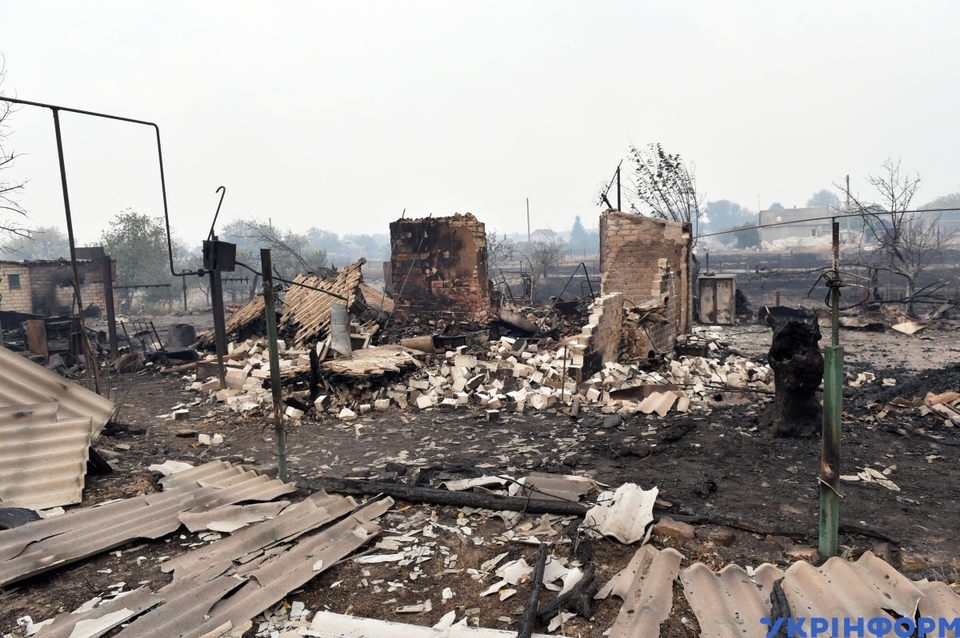
About 5,000 hectares of forest were burned and six people were killed in the blaze. Seventy-one people sought medical help, and 25 people were hospitalized. Some 80 cottages and 45 houses burned down. The estimated amount of losses exceeds UAH 450 million, without taking into account the environmental consequences.
On December 2, MPs adopted resolution No. 4262 on the establishment of an ad hoc commission in parliament to investigate the causes of large-scale fires in Luhansk region in 2020.
9. PLANE CRASH IN CHUHUIV
An An-26 military plane of the Ukrainian Air Force crashed while landing at the Chuhuiv airport in Kharkiv region late on September 25. There were 27 people on board the aircraft: seven crewmembers and 20 cadets of the Ivan Kozhedub National Air Force University.
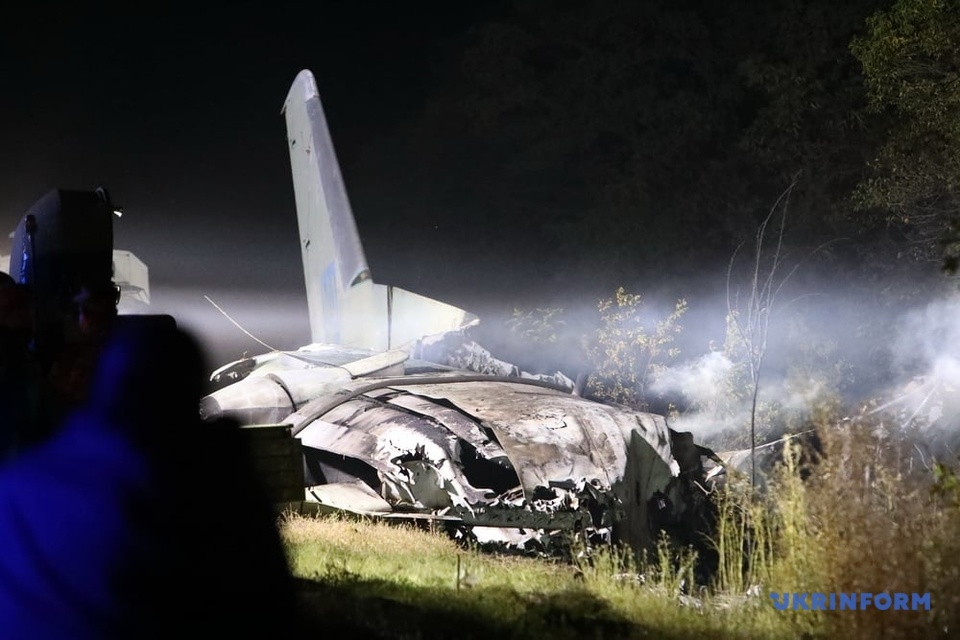
Twenty-five people died at the crash site, and one cadet, Vitalii Vilkhovyi, died from burns at the hospital. Cadet Viacheslav Zolochevskyi sustained bruises, wounds, and concussion. It was reported later that he would continue his studies at the university.
President Volodymyr Zelensky awarded 27 cadets and crewmembers of the An-26 aircraft with medals "For Military Service in Ukraine." In addition, seven crewmembers were posthumously awarded medals "For Exemplary Service to Ukraine."
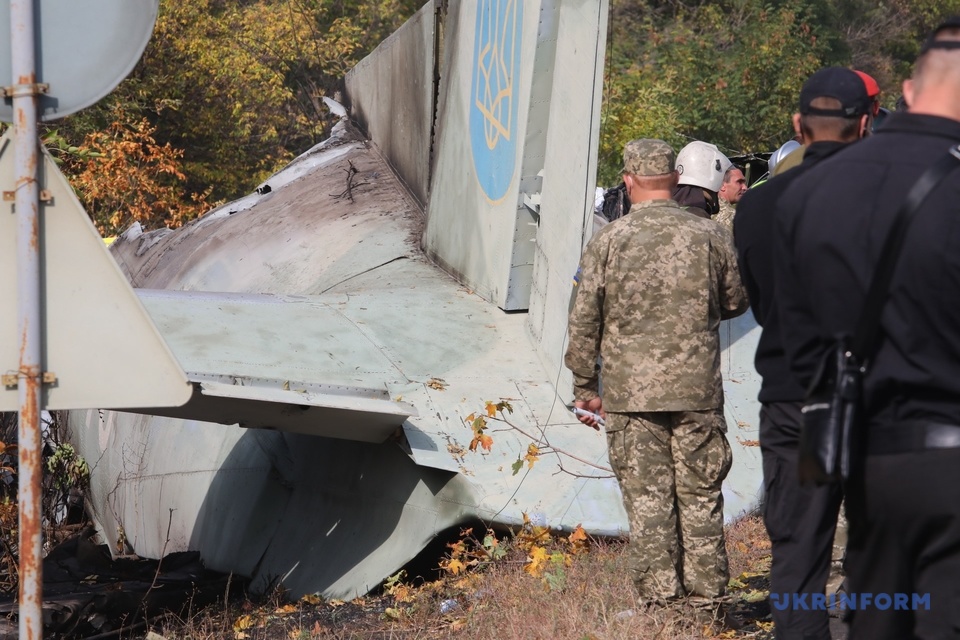
A government commission was set up to investigate the crash, which found that the disaster was caused by six dangerous factors, including engine failure and a pilot error.
All the materials of the commission were handed over to law enforcement agencies that continue to carry out investigative actions to establish the direct perpetrators of the tragedy and send the materials to court.
10. LOCAL ELECTIONS AMID COVID-19 PANDEMIC
On October 25, local elections were held in Ukraine under the new Electoral Code, which introduced a system of open party lists, reduced the number of deputies, and expanded the possibilities for recalling them.
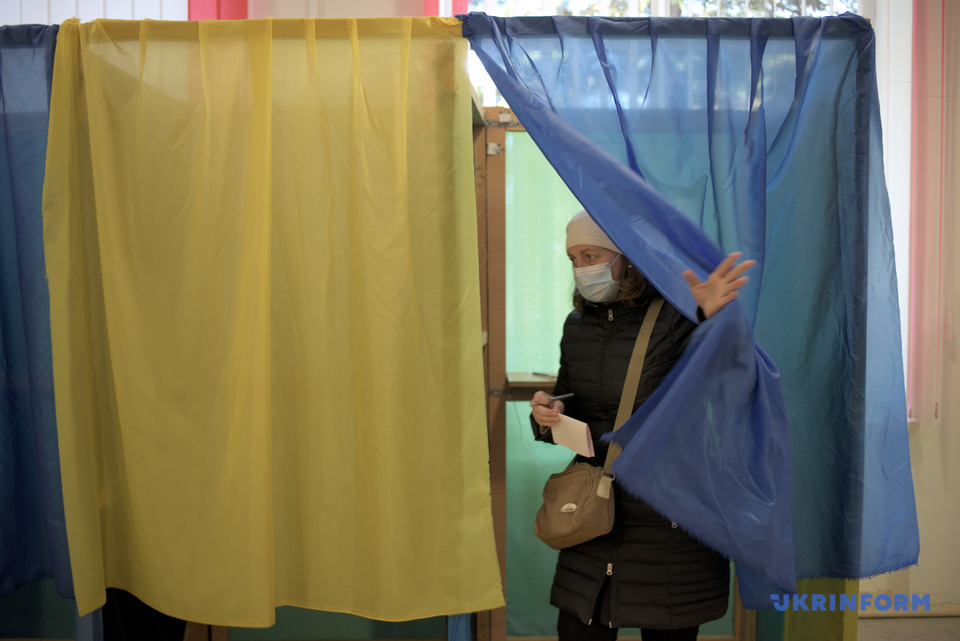
The biggest threat and obstacle to the 2020 elections was the COVID-19 pandemic. Although the elections did take place, the epidemiological situation in the country had a negative impact on voter turnout - the Central Election Commission said that it was about 37%. According to some estimates, non-compliance with sanitary requirements and social distancing during election campaigns and voting was one of the reasons for a sharp rise in COVID-19 cases in the weeks after the elections.
Mariana Rabcheniuk

